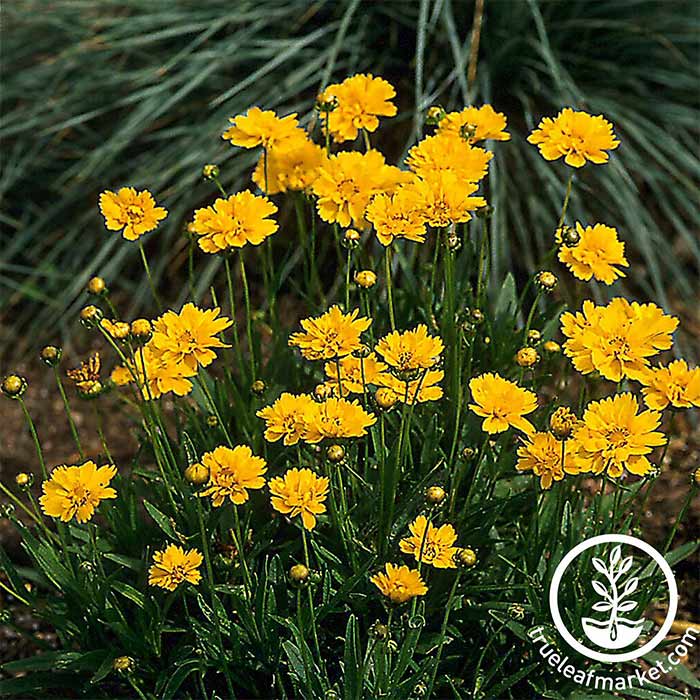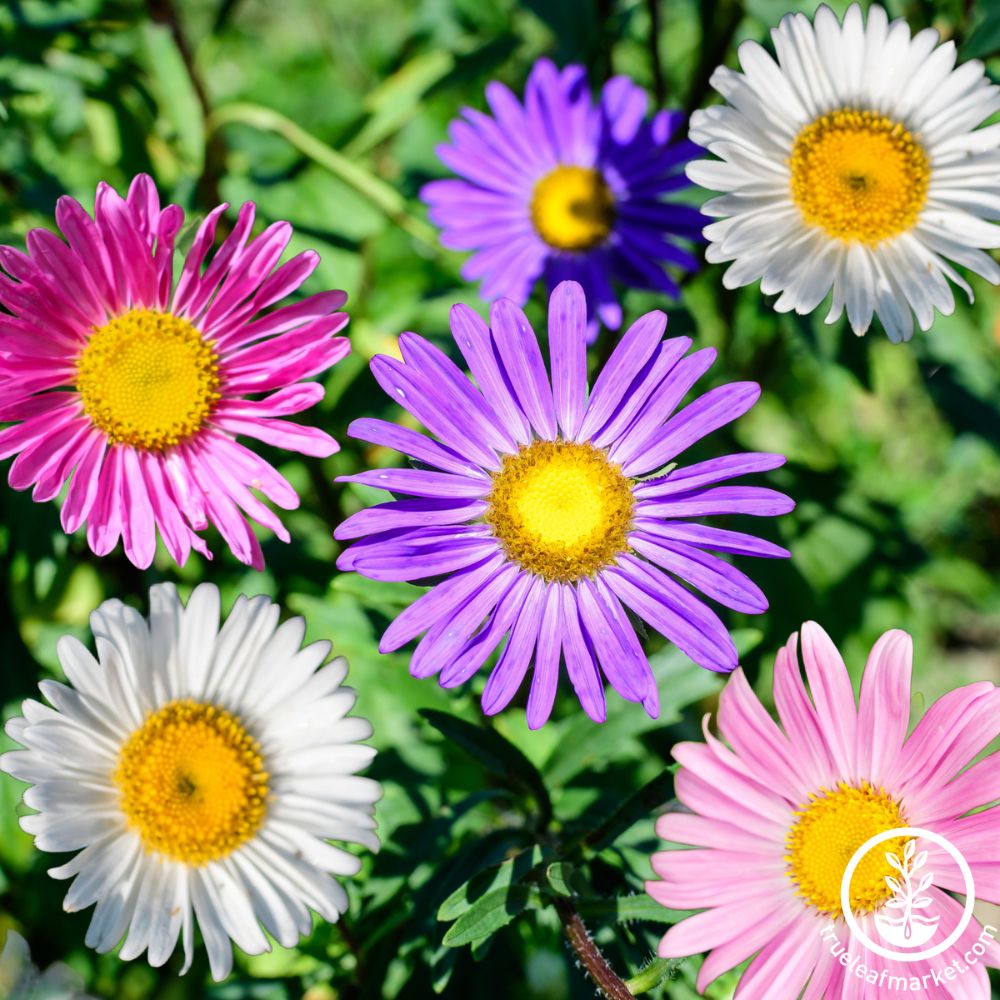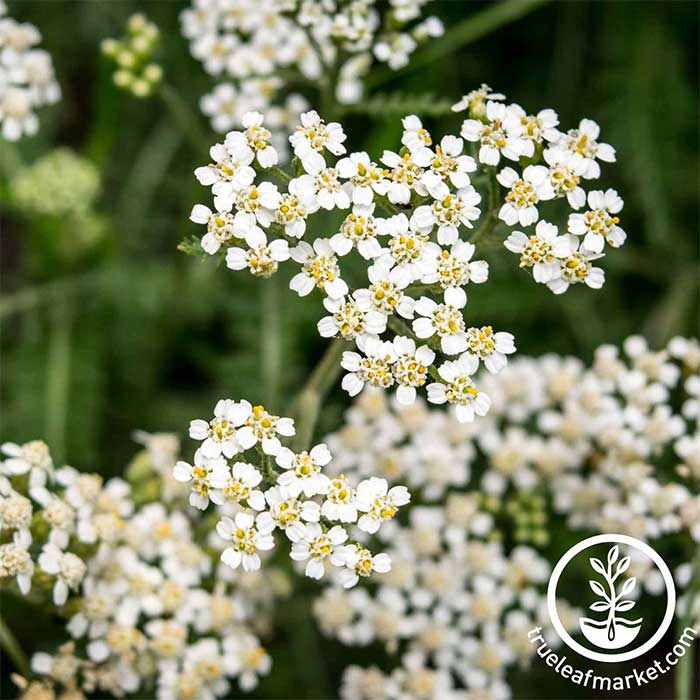10 Natives of the Southwest USA for Pest Control
By Lara Wadsworth
The Southwestern United States is a region incredibly unique to the rest of the country. The hot, dry weather can be challenging for plants and animals to thrive without additional help. That is why gardening with natives can be so wonderful! These plants already know how to live in the conditions of heat and drought. In addition, gardening with natives increases your yard's biodiversity, bringing in a host of beneficial insects. Beneficial insects include pollinators like bees and butterflies and hundreds of thousands of insects that work against pest populations to achieve an effortless balance. This article will serve as a quick guide to beneficial-insect-attracting flowers that you can easily plant in and around your garden to improve biodiversity and decrease the amount of pest-control measures you must take throughout the growing season.
Blue Flax (Linum lewisii)
This easy-to-grow blue beauty is native to North America. Tolerant of drought and heat, this underestimated flower is a haven for pirate bugs and green lacewings. Pirate bugs and green lacewings work together to control populations of thrips, aphids, mealybugs, and foliage-eating caterpillars. Pirate bugs are sometimes referred to as “Orius” which is the genus they belong to. These tiny bugs have a big appetite for garden pests. They are particularly attracted to plants with small flowers, like flax!

California Poppy (Eschscholzia californica)
This flower, known for being found in Southern California, is actually native to many parts of the Southwest. The classic red-orange blooms are highly attractive to hoverflies and ladybugs. Hoverflies and ladybug adults eat aphids in abundance, but their larvae are the real predators. They will eat basically any insect they find in their path, including aphids, thrips, scales, caterpillar eggs, mealybugs, and spider mites. The bright blooms are also attractive to bees, our most important pollinators.

Salvia (Salvia farinacea)
Also called Sage when found in the wild, there are a few species of Salvia native to the Americas. These late spring to summer bloomers attract green lacewings and ground beetles. These important predators consume a large number of harmful insects. Ground beetles are usually specialists; they have one or a few species that they target, but there are so many different kinds of ground beetles you are sure to have all your bases covered. I always recommend doing a bit of research about what beetles are native to your area and watching for those. There are some beetles that are invasive in certain regions and can end up doing more harm than good.

Mexican Hat (Ratibda columnifera)
These coneflowers are incredibly beautiful. Mexican hat flowers are named for their unique flower shape that is reminiscent of a sombrero. The red and yellow flowers are at their peak in the summertime, when hoverflies, ladybugs, and ground beetles happily find their home nearby. It is always good to have a variety of native plants for the optimal habitat for these creatures. Ladybugs are well-known for their aphid-eating power. Especially their larvae. Just one or two can clear out an infestation in a matter of days. Ladybugs, like butterflies, are attracted to bright-colored flowers, and the Mexican Hat fits the bill!

Penstemon (Penstemon strictus)
This loveable flower is wonderfully easy to grow from seed. This late spring to early summer bloomer is a great choice for rolling out the welcome mat to ladybugs, hoverflies, and butterflies. Although pollinators like butterflies do not directly impact pest populations, they are incredibly valuable to have around anyway. They ensure a garden gets pollinated and therefore fruit can develop! Without well-pollinated plants, the likelihood of struggling and decaying plants increases, which is a huge green light for pests like aphids, slugs, and spider mites. This lovely purple flower is another great weapon in your arsenal.

Coreopsis (Coreopsis spp.)
There are four main species of Coreopsis found in the Southwest, they are C. lanceolata, C, grandiflora, C. floridiana, and C. tinctoria. These can be referred to as Tickseed or simply Coreopsis. The darling yellow flowers bloom all summer long and attract hoverflies, butterflies, ladybugs, and bees. Hoverflies can sometimes be confused with wasps to the untrained eye. Wasps have longer bodies, four wings, and a small connector between their abdomen and thorax. Hoverflies only have two wings and look a lot more like a cross between a bumblebee and a wasp. They are also completely harmless to humans!

Blanket Flower (Gaillardia spp)
Gaillardias are native to many parts of North America, especially the Southwest! Gaillardia aristata and Gaillardia pulchella (also referred to as Indian Blanket) are both great options for any sunny southwestern garden looking for color. Blanket flowers attract important pollinators but also effective predators such as tachinid flies and pirate bugs. Tachinid flies are a type of parasitic insect predator, and pirate bugs are fantastic generalists. This means that the two of them together cover a lot of territory as far as pest management goes. The most common species of pirate bugs in Arizona are Orius insidiosus and Orius tristicolor. These species might just look like flat little flies to you and me, but they are outstanding friends to have around, readily destroying thrips, scale insects, spider mites, and more.

Asters (Aster spp.)
Various species of Asters are native to the American Southwest, but all of them work overtime in the beauty department. They also attract pirate bugs and tachinid flies to their late summer to fall blooms. Tachinid flies are great for stunting populations of beetles, caterpillars, grasshoppers, and more. While they don’t typically eat the adults, they neutralize the nymph and larval stages of these harmful insects, thus effectively controlling their populations.

Yarrow (Achillea millefolium)
Now available in white, red, and yellow, yarrow flowers are incredibly easy to grow. The clusters of adorable flowers can be seen throughout early summer and late fall. Yarrow attracts pirate bugs, tachinid flies, ladybugs, and other pollinators. I recommend to anyone interested in natural pest control to learn to identify Asian vs. American ladybugs. Asian Ladybugs were introduced into the United States a long time ago and have become invasive. While they do eat aphids, the American species are much better for the local ecosystem.

Purple Coneflower (Echinacea purpurea)
Last but certainly not least, the Purple Coneflower is drought tolerant, medicinal, beautiful, and useful! What more could you want? This summer bloomer is native throughout most of North America and is particularly used in the southwest and mountainous regions for drought tolerance. They attract butterflies, ladybugs, and green lacewings. Need I say more? The key is variety!

By planting these and other native flowers, you will welcome a host of pollinators and other beneficial insects to your garden. Balance is everything in nature. Plants and insects become invasive when the scales get tipped too far in one direction. By allowing a wide range of plants in your yard, you allow balance to take over. This approach will save you time and will likely save your harvest. For a one-and-done solution, try out our Southwest Wildflower Mix! You can scatter the seeds wherever you have the space and let nature take over (in a good way).